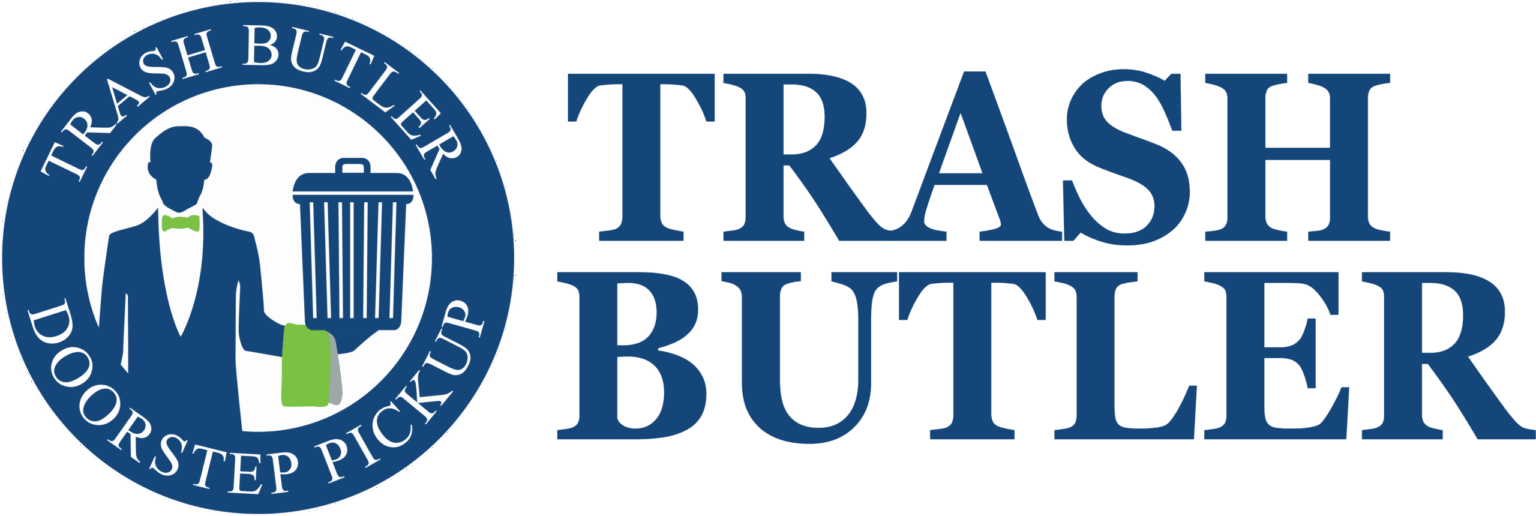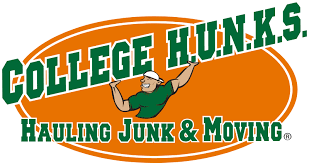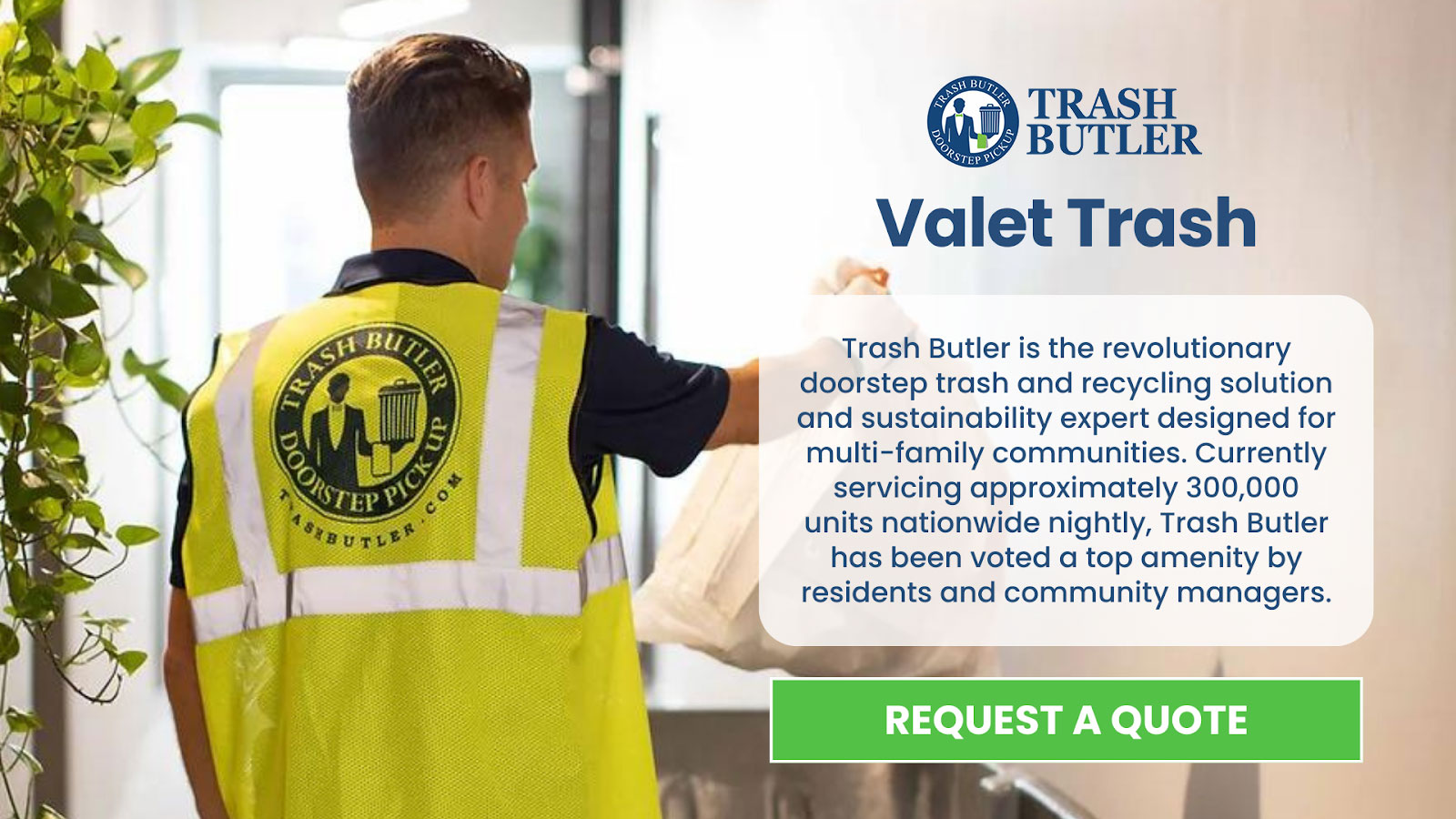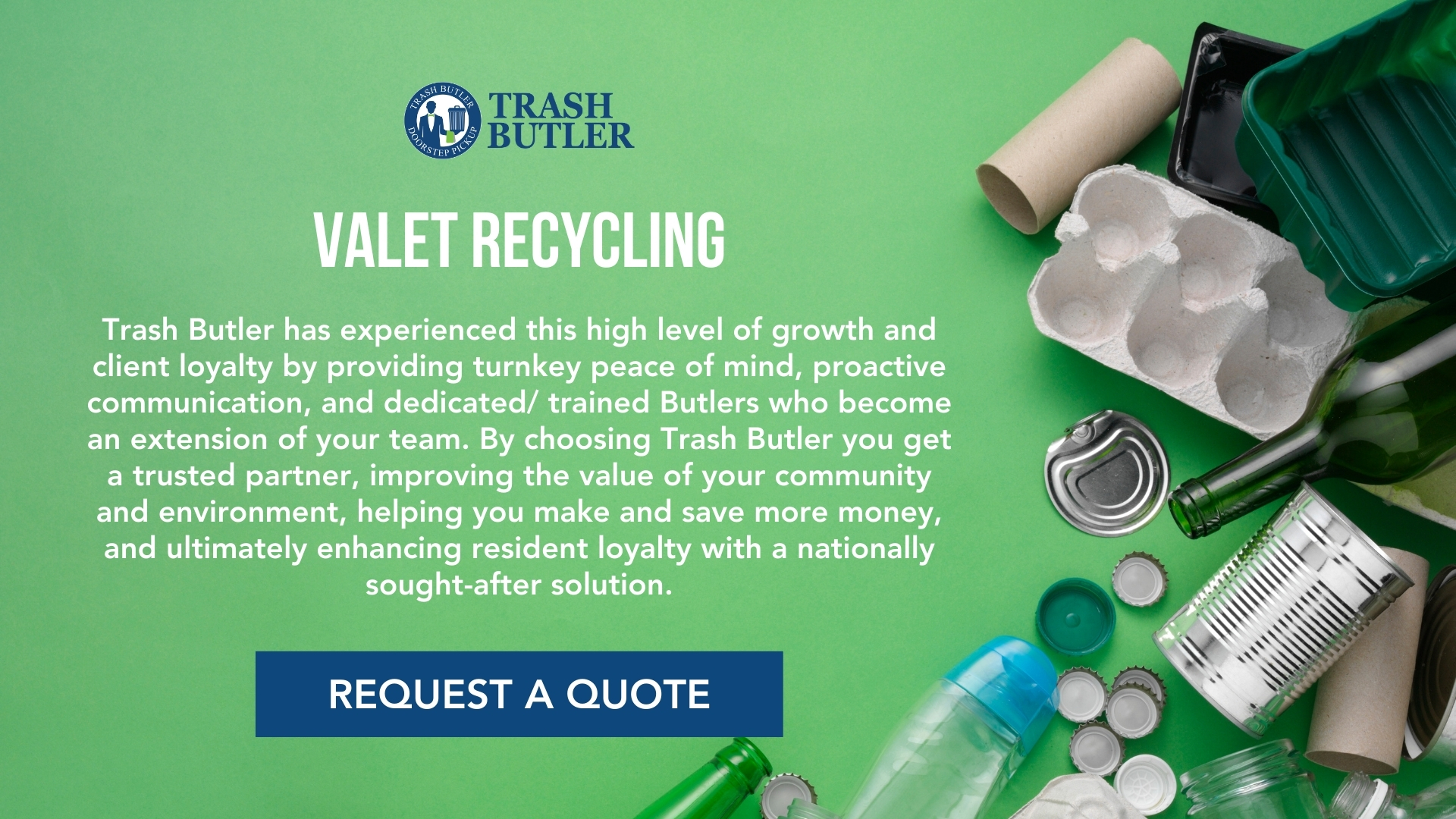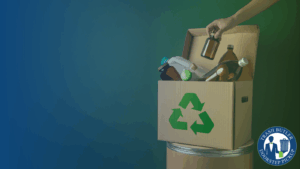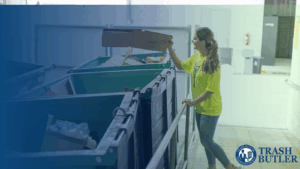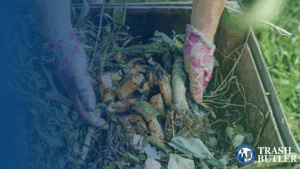Key Takeaways:
- Cardboard Is Highly Recyclable: Cardboard is a staple in packaging, with corrugated and non-corrugated types serving various purposes. While most cardboard is recyclable, contamination with food, grease, or wax can render it non-recyclable.
- Recycling Benefits Extend Beyond The Environment: Beyond conserving resources and reducing landfill waste, recycling cardboard supports economic efficiency by saving on raw material costs and energy consumption. It also fosters community engagement in sustainable practices.
- Effective Recycling Involves Everyone: From individuals to businesses, adopting proper recycling practices, such as ensuring cardboard is clean and dry, is crucial. Waste management companies play a key role in the recycling ecosystem, providing services that facilitate the collection, sorting, and processing of recyclable materials.
Layers Of Cardboard
Cardboard typically consists of three layers: an inner layer, an outer layer, and a corrugated layer sandwiched between them. The inner and outer layers of cardboard are made from a material known as paperboard, which is essentially thick paper. Paperboard is created by compressing and drying recycled paper fibers.
The quality of the cardboard depends on the type of paper fibers used in its production. Higher-quality cardboard usually contains longer and stronger fibers, making it more durable.
Corrugated Cardboard
The corrugated layer in cardboard is what provides strength and cushioning. This layer is made up of a fluted sheet that is securely glued between the inner and outer layers. The corrugated layer not only adds strength but also helps protect the contents of the packaging from damage during transportation. This is the kind of cardboard that is used for shipping boxes, packing materials, and moving boxes.
When recycling cardboard, the separation of these three layers becomes crucial. The recycling process involves breaking down the cardboard into its component parts, pulping the materials, and then forming them into new paper products. The separation of layers ensures that the recycled material is of high quality and can be used to create new cardboard packaging or other paper products.
Non-Corrugated Cardboard
Non-corrugated cardboard, such as cereal boxes or shoeboxes, can also be recycled, but they may have a lower recycling value due to the lack of fluting. It’s important to check with your local recycling center to see if they accept non-corrugated cardboard and how to properly prepare it for recycling.
Corrugated Cardboard: The Ideal Recyclable
High Recycling Rates
When it comes to recycling cardboard, corrugated cardboard stands out because of its high recycling rates. This type of cardboard can be recycled multiple times without losing its strength and quality, making it a sustainable choice for packaging materials. Furthermore, the recycling process for corrugated cardboard is relatively simple and energy-efficient, as it doesn’t require bleaching or harmful chemicals.
Widespread Availability
Another factor that makes corrugated cardboard the ideal recyclable is its widespread availability. Corrugated cardboard is used in various industries and households, leading to a consistent supply for recyclers. This abundance makes it easier to collect and process corrugated cardboard for recycling, contributing to its eco-friendliness and overall sustainability.
Environmental Impact
Moreover, recycling corrugated cardboard helps reduce the strain on landfills and lowers the demand for virgin materials. By choosing to recycle corrugated cardboard, individuals and businesses can play a significant role in conserving natural resources, reducing pollution, and minimizing waste. It’s a simple yet effective way to promote environmental responsibility and make a positive impact on the planet.
Paperboard Or Chipboard Recycling
Recycling Process
When it comes to paperboard recycling, the material is typically sorted from other recyclables and taken to a recycling facility. At the facility, the paperboard is mixed with water to create a slurry. This slurry is then cleaned to remove contaminants like ink and adhesives. After cleaning, the pulp is pressed and dried to create new paper products.
Considerations
One thing to keep in mind when recycling paperboard is that items like pizza boxes, which are often contaminated with grease and food residue, may not be suitable for recycling. It’s essential to check with your local recycling facility to see if they accept paperboard with food waste.
Chipboard Recycling
In addition to traditional paperboard, chipboard, which is made from recycled paper products, can be recycled. This recycling process is similar to paperboard, with the material being cleaned, pulped, and turned into new chipboard products.
By recycling paperboard and chipboard, you are not only helping to reduce waste but also conserving valuable resources and energy.
Waxed Cardboard: A Recycling Challenge
Recycling Challenges
Due to the waterproof nature of the wax coating, traditional recycling processes for cardboard are not effective for waxed cardboard. When mixed with regular cardboard during the recycling process, the wax can contaminate the recycled pulp, affecting the quality of the new paper products.
Recycling facilities face difficulties in separating waxed cardboard from regular cardboard, which hinders the recycling of both materials. Some recycling centers have the capability to remove the wax coating through a specialized process, but this can be costly and not all facilities have the equipment required.
Recycling Options
Despite these challenges, there are still options for recycling waxed cardboard. Some facilities may accept waxed cardboard for recycling if it is kept separate from regular cardboard. It’s important to check with your local recycling center to see if they have the capacity to handle waxed cardboard and if they have specific guidelines for its recycling.
Pizza Boxes And Food Contamination Issues
Challenges Of Food Contamination
Pizza boxes are often stained with grease, cheese, and other food remnants, making them less desirable for recycling. These contaminants can affect the recycling process by reducing the quality of the recycled cardboard. Grease and oil can weaken the fibers in the cardboard, leading to a lower-quality end product.
Recyclability Of Pizza Boxes
However, this doesn’t mean that pizza boxes are completely unrecyclable. If the box is relatively clean and free of heavy grease stains, it can still be recycled. You can remove any stuck-on food debris or excess grease by tearing off the soiled portions and placing the clean parts in the recycling bin.
Recycling Options
Alternatively, some recycling facilities have the capability to separate the clean cardboard from the soiled parts during the recycling process. This allows for the recycling of the clean portions while discarding the contaminated sections appropriately.
Tips For Improving Recyclability
To improve the recyclability of pizza boxes, consider scraping off excess cheese and food residue before disposing of them for recycling. Additionally, separating the lid from the bottom of the pizza box can also help ensure that at least one part is clean enough for recycling.
Recycling Cardboard With Ink And Labels
Cardboard packaging often comes with various printed ink and labels, but this doesn’t mean it can’t be recycled. In fact, most recycling facilities are equipped to handle cardboard with ink and labels. However, there are a few considerations to keep in mind to ensure the recycling process goes smoothly.
Choosing Eco-Friendly Inks
When recycling cardboard with printed ink or labels, removing any non-paper elements, such as plastic tape or metal clips, is essential as these can contaminate the recycling stream. Simply peel off any stickers or labels, and cut out sections with excessive ink or tape residue before tossing the cardboard into the recycling bin. This extra step not only helps maintain the quality of the recycled material but also prevents potential issues during the recycling process.
Furthermore, while most types of ink used on cardboard packaging are safe for recycling, certain inks containing heavy metals or other harmful chemicals may not be environmentally friendly. Soy-based or water-based inks are eco-friendly alternatives that ensure the ink poses no harm to the environment during the recycling process.
Handling Labels Responsibly
Labels on cardboard packaging are typically made of paper, making them recyclable along with the cardboard. However, if the labels are made of plastic or other non-recyclable materials, it’s best to remove them before recycling the cardboard. Separating the recyclable components from non-recyclable ones streamlines the recycling process and enhances the quality of the recycled materials, promoting sustainability and environmental consciousness.
Final Thoughts
Understanding the different types of cardboard that can be recycled is essential for anyone looking to minimize their environmental impact and contribute to a more sustainable future. By knowing which types of cardboard are recyclable, individuals and businesses can ensure that these materials are diverted from landfills and used to create new products, thus preserving valuable resources and reducing waste.
Whether it’s corrugated cardboard, paperboard, or mixed-paper materials, recycling these items not only helps conserve energy and reduce the demand for raw materials but also plays a crucial role in combating climate change. By opting to recycle cardboard, we can significantly decrease the greenhouse gas emissions associated with the production of new materials.
It is important to remember that proper disposal methods, such as breaking down boxes, removing any contaminants, and following local recycling guidelines, are key to ensuring that cardboard is recycled effectively. Additionally, considering options such as composting or upcycling can further extend the lifespan of cardboard materials and promote a circular economy model.
Ultimately, by making a conscious effort to recycle cardboard whenever possible, we can all play a part in creating a more sustainable and environmentally friendly society. Request a Trash Butler quote today!
Frequently Asked Questions
What is cardboard recycling?
Cardboard recycling is the process of reprocessing and reusing thick paper-like materials or heavy papers that have been used or discarded. It involves collecting, sorting, and transforming cardboard into new cardboard products or other paper materials, reducing the need to cut down trees and decreasing environmental pollution.
How does cardboard recycling help the environment?
Recycling cardboard saves trees by reducing the demand for new paper. It also conserves energy, reduces greenhouse gas emissions, and minimizes landfill waste. Since cardboard is biodegradable and recyclable, it plays a significant role in the circular economy, contributing to a more sustainable environment.
What types of cardboard can be recycled?
Most types of cardboard can be recycled, including corrugated cardboard (used for shipping boxes) and flat cardboard (such as cereal boxes and shoeboxes). However, it’s essential to remove any non-paper attachments like plastic liners, tape, or staples before recycling.
Can waxed cardboard be recycled?
Waxed cardboard, typically used for produce boxes and some types of food packaging, cannot be recycled through conventional recycling programs due to its wax coating. However, some specialized facilities may accept them for composting.
How should cardboard be prepared for recycling?
Cardboard should be clean, dry, and free from food waste, grease, or liquid. Flatten the boxes to save space in the recycling bin, and remove any non-paper packaging materials such as plastic, polystyrene foam inserts, or tape.
Can I recycle cardboard with tape on it?
It’s best to remove as much tape as possible before recycling cardboard. Small amounts of tape are typically removed during the recycling process, but excessive tape can interfere with the process and should be avoided.
Are cardboard milk cartons recyclable?
Cardboard milk cartons can be recyclable, but they are often coated with a thin layer of plastic or, less commonly, wax, to prevent leakage. This type of packaging, known as aseptic or gable-top, needs to be recycled through specific programs that can separate the paper from the plastic or wax.
Can greasy or food-stained cardboard be recycled?
Greasy or heavily food-stained cardboard cannot be recycled because the oils can interfere with the paper fibers, making the recycling process difficult. Such materials should be composted if possible or discarded in the trash.
Can you recycle all types of paperboard?
Not all types of paperboard are recyclable. For instance, paperboard coated with plastic, foil-lined paperboard, or paperboard with food contamination cannot be recycled. It’s important to check local recycling guidelines as they can vary by location.

